List of endocrine glands
MCAT Content / Endocrine System Hormones And Their Sources / Major Endocrine Glands Names Locations Products
Major endocrine glands: names, locations, products
The main endocrine glands are the hypothalamus, pituitary (anterior and posterior), thyroid, parathyroid, adrenal (cortex and medulla), pancreas, and gonads. All these glands together form the endocrine system.
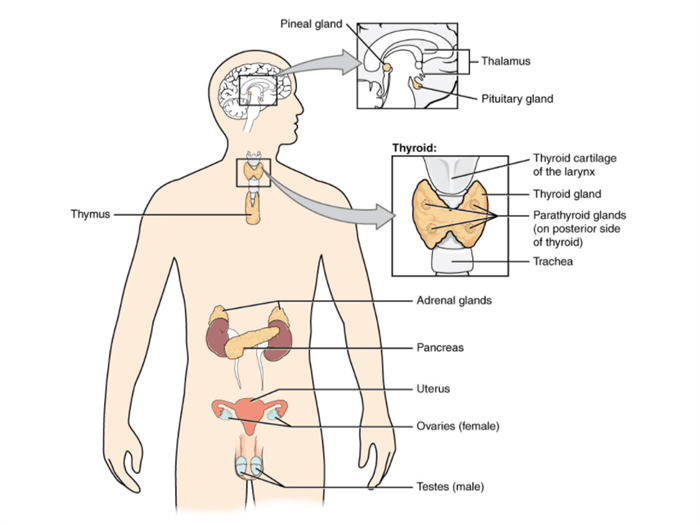
1. The hypothalamus is an endocrine organ located in the brain. The hypothalamus synthesizes hormones such as ADH and oxytocin. The hypothalamus also synthesizes and secretes regulatory hormones that control the endocrine cells in the anterior pituitary gland such as Gonadotropin-Releasing Hormone, Thyrotropin Releasing Hormone, Growth Hormone Releasing Hormone and somatostatin.
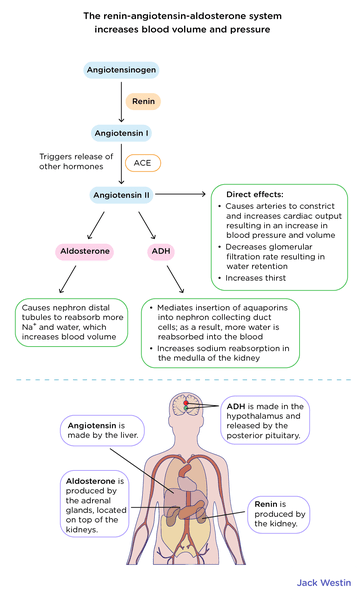
2. The pituitary gland, sometimes called the “master gland,” is located at the base of the brain. The pituitary has two distinct regions: the anterior pituitary and the posterior pituitary.

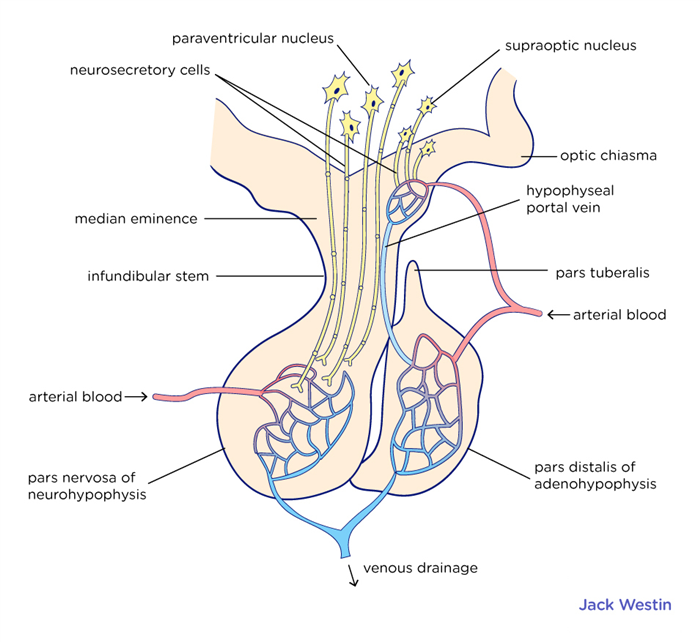
The anterior pituitary produces seven hormones: growth hormone (GH), prolactin (PRL), thyroid-stimulating hormone (TSH), melanin-stimulating hormone (MSH), adrenocorticotropic hormone (ACTH), follicle-stimulating hormone (FSH), and luteinizing hormone (LH). Anterior pituitary hormones are sometimes referred to as tropic hormones because they control the functioning of other organs. While these hormones are produced by the anterior pituitary, their production is controlled by regulatory hormones produced by the hypothalamus. The antidiuretic hormone (ADH) (or vasopressin) and oxytocin are produced by neurons in the hypothalamus and transported to the posterior pituitary. They are released into the circulatory system via neural signalling from the hypothalamus. These hormones are considered to be posterior pituitary hormones even though they are produced by the hypothalamus since that is where they are released into the circulatory system.
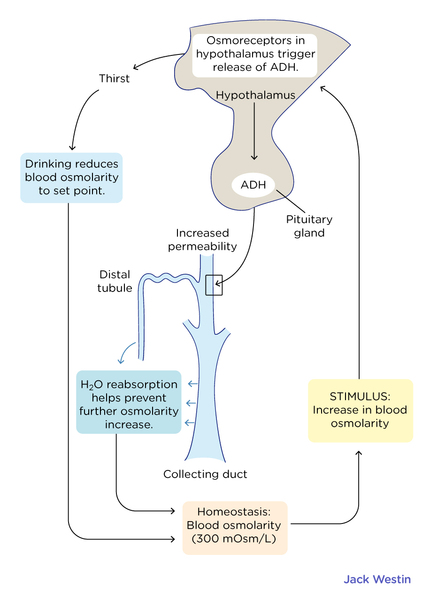
3. The thyroid gland, one of the largest endocrine glands in the body, is located in the neck, just below the larynx and in front of the trachea. The thyroid gland produces the hormones T3 (triiodothyronine) and T4 (thyroxine). These hormones increase the metabolic activity of the body‘s cells.
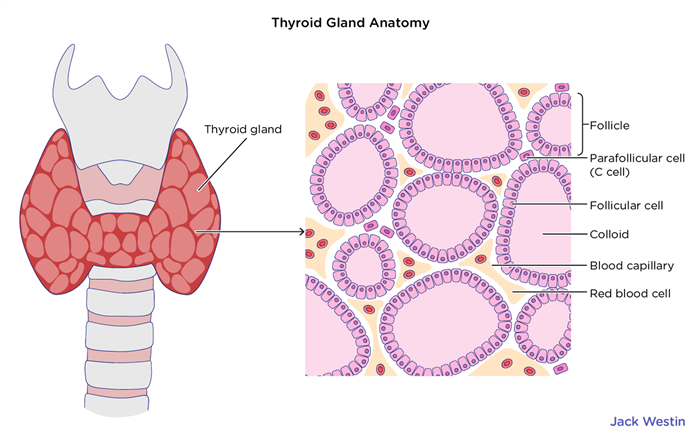
4. The parathyroid glands are small endocrine glands that produce parathyroid hormone. Most people have four parathyroid glands; however, the number can vary from two to six. These glands are located on the posterior surface of the thyroid gland.
5. Adrenal glands are a pair of ductless glands located above the kidneys. The adrenal glands produce glucocorticoids and androgens, which are sex hormones that promote masculinity. Androgens are produced in small amounts by the adrenal cortex in both males and females. They do not affect sexual characteristics and may supplement sex hormones released from the gonads. The adrenal medulla contains large, irregularly-shaped cells that are closely associated with blood vessels. The adrenal glands also produce epinephrine (adrenaline) and norepinephrine (noradrenaline) in response to stress.

6. The pancreas is an elongated organ that is located between the stomach and the proximal portion of the small intestine. It contains both exocrine cells that excrete digestive enzymes and endocrine cells that release hormones. As an endocrine gland, the pancreas produces several important hormones, such as insulin and glucagon in the islets of Langerhans, which are secreted into the bloodstream to regulate blood sugar levels.
7. The pineal gland is a small endocrine gland in the brain. It is located near the center of the brain, between the two hemispheres. The main hormone produced and secreted by the pineal gland is melatonin.
8. The gonads are additional types of endocrine glands. They are the sex organs and include the male testes and female ovaries. Their main role is the production of steroid hormones. The testes produce androgens, which allow for the development of secondary sex characteristics and the production of sperm cells. The ovaries produce hormones, such as estrogen and progesterone, which cause secondary sex characteristics and prepare the body for childbirth.
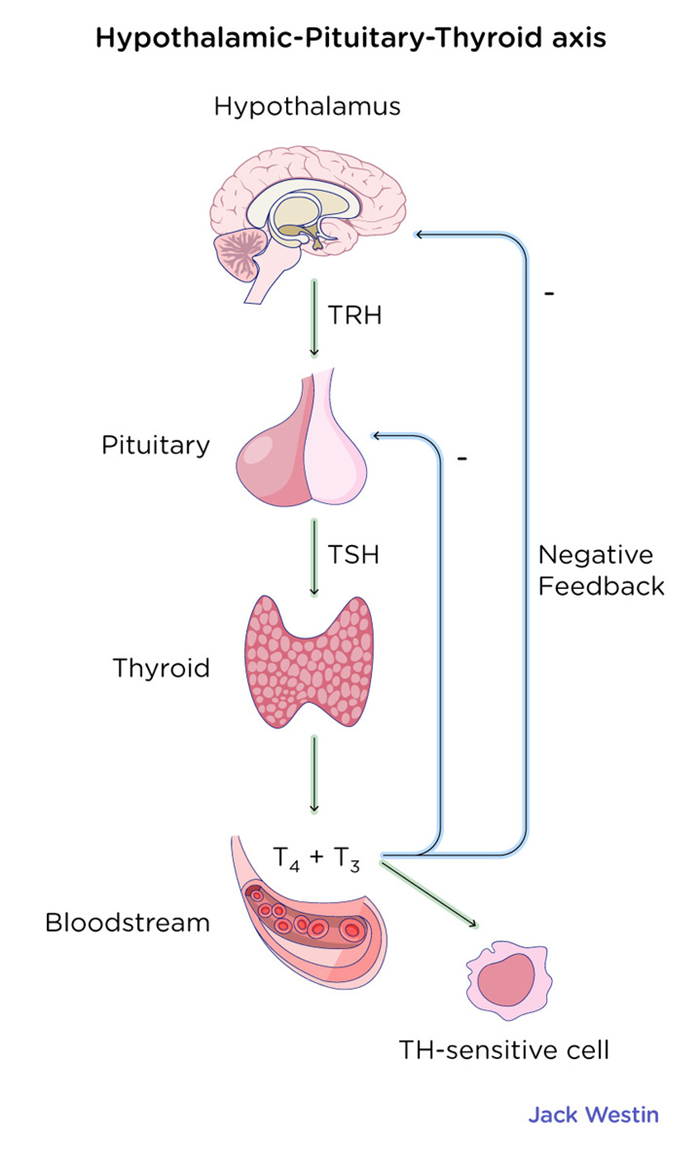
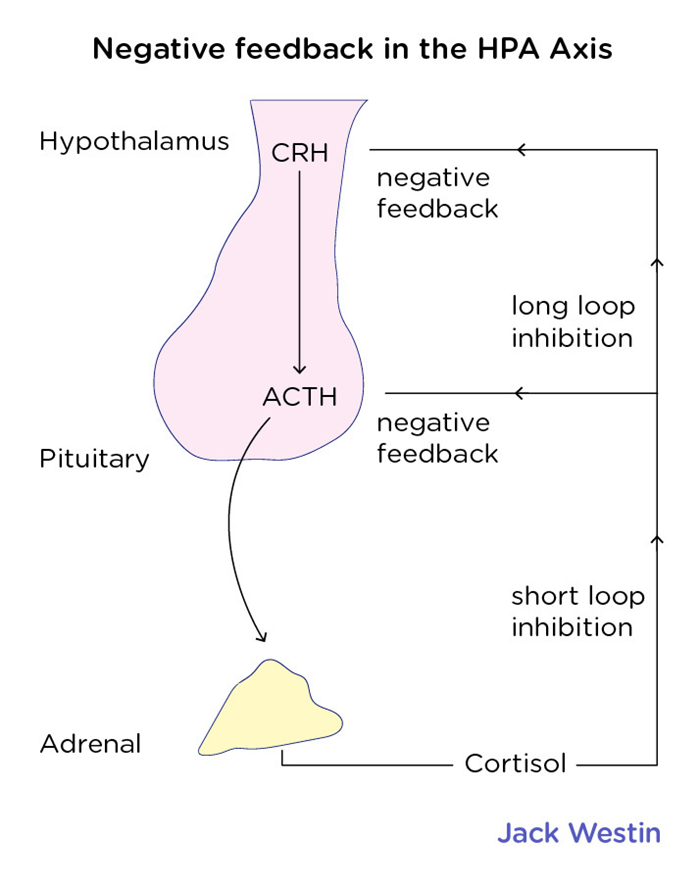
Section Bank B/B Section Passage 7 Question 46
Section Bank B/B Section Passage 7 Question 51
Practice Exam 3 B/B Section Question 29
Sample Test B/B Section Passage 8 Question 41
Sample Test B/B Section Passage 8 Question 42
Sample Test B/B Section Passage 8 Question 43
• The hypothalamus synthesizes hormones and transports them to the posterior pituitary gland while also synthesizing and secreting regulatory hormones that control cells in the anterior pituitary gland.
• The anterior pituitary gland, regulated by the hypothalamus, produces seven tropic hormones, growth hormone (GH), prolactin (PRL), thyroid-stimulating hormone (TSH), melanin-stimulating hormone (MSH), adrenocorticotropic hormone (ACTH), follicle-stimulating hormone (FSH), and luteinizing hormone (LH), which control the functioning of other organs.
• The posterior pituitary stores hormones produced by the hypothalamus (ADH and oxytocin) and release them into the bloodstream; the gland does not actually produce any hormones.
• The thyroid gland produces T3, T4 and calcitonin hormones.
• Parathyroid glands are responsible for the regulation of the body’s calcium and phosphorus levels by producing parathyroid hormone, which helps control calcium release.
• The two major hormones produced by the adrenal cortex are the mineralocorticoids, which regulate the salt and water balance, and the glucocorticoids, which can regulate blood glucose and the body’s inflammatory response.
• There are three main glucocorticoids: cortisol, corticosterone, and cortisone.
• The adrenal medulla produces the hormones epinephrine and norepinephrine; these hormones regulate heart rate, breathing rate, cardiac muscle contractions, blood pressure, and blood glucose levels.
• Glucagon and insulin are examples of hormones created by the pancreas that regulate the blood sugar levels.
• The pineal gland, a small endocrine gland in the brain, is responsible for producing hormone melatonin involved in the regulation of biological rhythms, mainly circadian rhythms.
• The gonads (the testes in males and ovaries in females) are responsible for the production of steroid hormones, such as testosterone, estrogen, and progesterone.
Hypothalamus: a region of the forebrain located below the thalamus that regulates body temperature, some metabolic processes and governs the autonomic nervous system
Glucocorticoid: any of a group of steroid hormones, produced by the adrenal cortex, that are involved in metabolism and have anti-inflammatory properties
Epinephrine: (adrenaline) an amino acid-derived hormone secreted by the adrenal gland in response to stress
Islets of Langerhans: regions in the pancreas that contain its endocrine cells
Exocrine: producing external secretions that are released through a duct
Androgen: the generic term for any natural or synthetic compound, usually a steroid hormone, that stimulates or controls the development and maintenance of masculine characteristics in vertebrates.
Oxytocin: a hormone that stimulates contractions during labor, and then the production of milk
Antidiuretic hormone: a hormone secreted by the hypothalamus to control water levels in the body
Parathyroid hormone: a hormone secreted by the parathyroid glands that regulate the calcium concentration of blood
Melatonin: a hormone that regulates the sleep-wake cycle